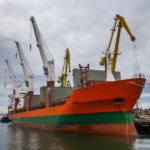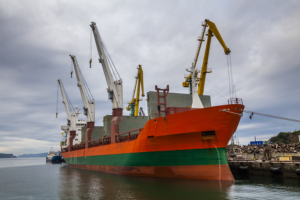Analytics represents the ability to make data-driven decisions based on a summary of relevant and reliable data; using visualization in graphs, tables, and other means. Supply chains typically generate large amounts of data. Supply chain analytics helps us harness the data by discovering patterns and generating insights.
The different types of supply chain analytics include:
Descriptive analytics; Provides visibility and a single source of data across the supply chain for both internal and external systems and data.
Predictive analytics: Helps a company understand the most likely outcome or future scenario and its business implications. For example, predictive analytics can prevent and reduce disruption and risk.
Prescriptive analytics: Helps companies solve problems and collaborate to get maximum business value. Helps companies collaborate with logistics partners to reduce the time and effort of preventing disruptions.
Cognitive Analytics: Helps a company answer complex questions in natural language, the same way a person or team of people would answer a question. It helps companies think of solutions to solve a complex problem or question, such as “How can we improve or optimize X?”
How do analytics help you?
Supply chain analytics is also the basis for applying cognitive technologies to the supply chain process, such as artificial intelligence (AI). Cognitive technologies understand, reason, learn and interact like a person, but with greater capability and speed.
This advanced form of supply chain analysis is emerging in a new era of supply chain optimization. It can automatically analyze large amounts of data to help a company improve forecasting, identify inefficiencies, better respond to customer needs, drive innovation, and pursue breakthrough ideas.
Supply chain analytics can help a company make smarter, faster, and more efficient decisions. Advantages include the ability to:
Achieve a significant return on investment; 29% of companies achieved high levels of ROI using analytics, compared to only 4% that did not achieve ROI.
Understand risks better: Supply chain analytics can identify known risks and help predict future risks by identifying patterns and trends across the supply chain.
Improve planning accuracy: By analyzing customer data, supply chain analysis can help a company better predict future demand. It helps a company decide which products can be minimized when they become less profitable or understand what the customer needs will be after the initial order.
Get a simple supply chain: Likewise, companies can use supply chain analytics to monitor warehouse, partner responses, and customer needs to make more informed decisions.
Why use supply chain analytics?
As technologies like AI become more common in supply chain analytics, companies can gain a wealth of additional benefits.
Information not previously processed because of the limitations of natural language data analysis can now be analyzed in real-time. AI can quickly and comprehensively read, understand, and correlate data from different sources, silos, and systems. It can then provide real-time analysis based on data interpretation. Companies will have much broader supply chain intelligence. They can become more efficient and avoid disruptions, supporting new business models.
The supply chain is the company’s most obvious representative to customers and consumers. The better a company can perform supply chain analytics, the better it will protect its reputation and long-term sustainability.
The five characteristics of effective supply chain analytics of the future are:
Connected: Be able to access unstructured data from social media, and structured data from the Internet of Things (IoT). In addition, traditional data sets are available through traditional ERP and B2B integration tools.
Collaborative: Improving collaboration with suppliers increasingly means using cloud-based commerce networks to enable multi-company collaboration and engagement.
Cyber-aware: Certainly, the supply chain must strengthen its systems against cyber intrusions and hackers, which should be a corporate concern.
Cognitively enabled: The AI platform becomes the control tower of the modern supply chain, compiling, coordinating, and driving decisions and actions in the chain. Most of the supply chain is automated and self-learning.
Fully comprehensive: Data analytics capabilities must scale with real-time data. Above all, insights will be comprehensive and fast. Latency is unacceptable in the supply chain of the future.
In today’s supply chain networks, effective analytics requires greater customer-centricity, responding quickly, and maintaining accuracy and integrity. For instance, companies are looking for supply chain analytics solutions that can quickly analyze large amounts of data from different sources, including unstructured and natural language-based data.
Finally, the supply chain is required to anticipate an increasing number of supply chain variables, including external forces such as weather, war, workers, and regulations.
Centralize your data
To sum up, our smart operating system unifies all your supply chain to produce reliable forecasts and boost your logistics. We are so confident in our work that we provide a free sample right here.


















